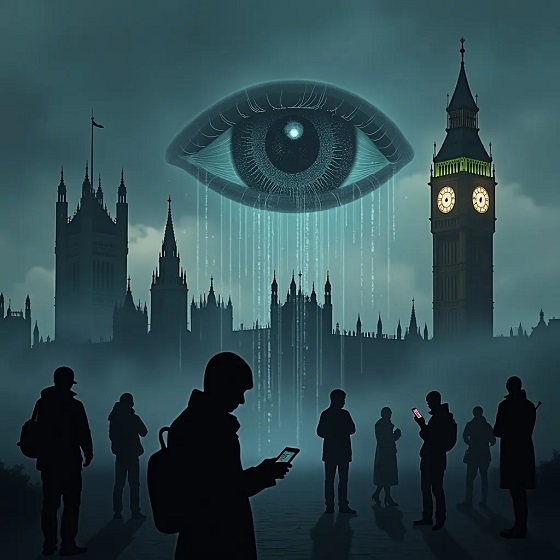Christopher Rufo
How Gender Ideology Captured the State Department

|

|
In a job posting for a security escort position at the U.S. Consulate General in Lagos, for example, applicants are told that “[t]he U.S. Mission in Nigeria supports Diversity, Equity, Inclusion and Accessibility (DEIA),” and that “[a]ll genders are welcome to apply.” Some two-thirds of the job summary is dedicated to DEI, as if U.S. security officers should be more concerned with gender pronouns than terrorist attacks.
The U.S. Department of State is charged with advancing American interests abroad through complex and delicate diplomatic missions, as well as maintaining the safety of those missions and the Americans serving them.
The institution’s lodestar should be the national interest, but under President Joe Biden, the State Department has demoted that critical objective in favor of a new global agenda: to spread radical gender theory to foreign nations.
The shift began at the top. President Biden and, in turn, the apparatus beneath him led America’s leftward charge on the world stage. Upon taking office in 2021, the administration used the previous year’s racial unrest as a pretext to issue a slew of executive orders and memoranda entrenching left-wing ideologies in all levels of the federal government, under the guise of “diversity, equity, and inclusion,” or DEI.
As part of this initiative, the White House required each federal agency to submit detailed DEI progress reports regularly, appoint a chief diversity officer, and create “Agency Equity Teams,” whose leaders were tasked with “delivering equitable outcomes.” These requirements contributed to what the president called “an ambitious whole-of-government equity agenda.”
The gender component of this agenda spread to the State Department through the president’s “Memorandum on Advancing the Human Rights of Lesbian, Gay, Bisexual, Transgender, Queer, and Intersex Persons Around the World.” Published in February 2021, this memorandum directed State and other agencies to monitor closely and report on the “LGBTQI+” policies of our allies, to “broaden the number of countries willing to support and defend” the radical Left’s understanding of gender—for example, by funding pro-transgender “civil society advocates” in order to shift public opinion in those countries—and to tie in the principles of gender theory to America’s foreign-aid programs.
If necessary, the memo maintained, agencies should use “the full range of diplomatic and assistance tools” to ensure foreign governments’ compliance with this agenda, including “financial sanctions, visa restrictions, and other actions.”
The policy’s most visible expression was Secretary Antony Blinken’s 2021 authorization allowing American embassies to fly rainbow flags. This symbolic gesture was just the tip of the iceberg, however. Under Blinken’s leadership, State has woven critical theory into the fabric of America’s foreign policy. “I want to be crystal clear about this,” the secretary said upon appointing the agency’s first chief diversity officer in June 2021. “Promoting diversity and inclusion is the job of every single member of this department. It’s mission critical.”
To that end, Blinken spearheaded the adoption of an internal diversity plan that commits the department to hiring “a workforce that reflects the diversity of the United States . . . and implementing a comprehensive recruitment plan that targets underrepresented groups”; conducting a sophisticated “DEIA Climate Survey”; and, bizarrely, producing a “crowdsourced digital storytelling campaign” called #FacingDiplomacy, a self-flagellating chronicle of “the historic impact of discrimination in the Department.”
Material incentives ensure compliance with this official ideology: the “advancement of DEIA” is now considered “as an element for all employees as part of their job performance criteria, career advancement opportunities, and senior performance pay.”
The heart of the department’s effort, though, is not to increase adherence at home but to spread it abroad. State recruited a cadre of gender activists to entrench these theories into foreign policy.
One key figure is gender activist Jessica Stern, whom the president appointed as special envoy to advance the human rights of LGBTI+ persons. She was previously the executive director of OutRight Action International, helped to found the United Nations LGBTI Core Group, and was responsible for the first UN resolution to include the term “gender identity.”
Another key figure is Zakiya Carr Johnson, who stepped in as the department’s chief diversity officer earlier this year. Like Stern, Johnson also has a history of activism, having spent six years at a left-wing NGO in Brazil, as well as at other “inclusive” organizations, such as Atlantic Fellows, ODARA Solutions, and her own start-up, Black Women Disrupt.
These women are not figureheads. They aggressively press gender theory into foreign policy. Johnson, in particular, regularly promotes the State Department’s ideological agenda on social media, spotlighting her exchange with the Brazilian high representative for gender issues, meeting with the Chilean ambassador to applaud his “#FeministForeignPolicy,” or speaking at the Colombian embassy about “diversity” and “inclusion.”
The diversity agenda has been translated to the day-to-day operations at embassies around the world. Some embassies are even screening security positions for adherence to DEI. In a job posting for a security escort position at the U.S. Consulate General in Lagos, for example, applicants are told that “[t]he U.S. Mission in Nigeria supports Diversity, Equity, Inclusion and Accessibility (DEIA),” and that “[a]ll genders are welcome to apply.” Some two-thirds of the job summary is dedicated to DEI, as if U.S. security officers should be more concerned with gender pronouns than terrorist attacks.
Inside the embassies, gender has become a near obsession. State’s latest annual LGBTQI+ progress report lists countless present and future efforts across all foreign agencies to make the world safe for queer theory, from “Pride Events at Headquarters” to “Gender Equity in the Mexican Workplace.” Among these is a department-wide partnership with the Global Equality Fund, a public-private entity “dedicated to advancing and defending the human rights of LGBTQI+ persons around the world” that has directed funds to 116 “grassroots” LGBTQI+ organizations in 73 countries.
State itself asserts that U.S. diplomatic efforts should reflect progressive ideology. In a special report on “DEIA Promotion” by the department’s advisory commission on public diplomacy, State evaluates “how U.S. missions adapt existing programs to DEIA principles,” which are to inform “all aspects of the Department’s policymaking as well as efforts to address barriers to opportunity for individuals historically and currently burdened by inequality and systemic discrimination.” Realpolitik, in other words, should give way to critical theory.
These efforts raise a critical question: Does gender theory advance the U.S.’s national interests? The answer appears to be no. But that is hardly an obstacle for State’s gender activists. They want to hang the rainbow flag throughout the benighted parts of the world. This mission trumps all others.
Christopher Rufo is a reader-supported publication. To receive new posts and support my work, consider becoming a free or paid subscriber.
This article was originally published in City Journal
Christopher Rufo
Radical Normie Terrorism

Why are Middle American families producing monsters?
In the 1960s and 1970s, America witnessed a wave of political terrorism. Left-wing radicals hijacked airplanes, set bombs in government buildings, and assassinated police officers in service of political goals. The perpetrators were almost always organized, belonging to groups like the Weathermen or the Black Liberation Army. These groups demanded the release of prisoners, denounced capitalism, or called for violent revolution against the United States. Their members were radical but largely lucid, justifying their actions with appeals to a higher cause.
In recent years, a new form of terror has emerged: decentralized, digitally driven violence organized not around coherent ideologies but around memes, fantasies, and nihilistic impulses. The perpetrators of this low-grade terror campaign do not belong to hierarchical organizations or pursue concrete political aims. More often, they come from ordinary families and lash out in acts of violence without discernible purpose.
At the close of this summer, two such incidents underscored the trend: the attack on schoolchildren at Annunciation Catholic Church in Minneapolis, Minnesota, and the assassination of Charlie Kirk in Orem, Utah. Though the first resembled the school-shooter archetype and the second evoked a JFK-style political assassination, both share psychological and sociological roots that make them more alike than they initially appear.
The new terror campaign is defined by a particular kind of psychopathology. It is perhaps tautological that anyone willing to kill innocent schoolchildren as they are praying or to assassinate a popular podcast host in broad daylight is pathological. But in these cases, both alleged killers—Robin Westman (formerly Robert Westman), and Tyler Robinson—left behind several warning signs that were psychological in nature.
Westman, the alleged Annunciation shooter, left a diary detailing fantasies and inner turmoil related to his transgender identity. While he decorated his weapons with pithy slogans, including “Kill Donald Trump,” “Burn Israel,” and “Nuke India,” these were memes and ironies, designed to give the appearance of ideology, concealing a potentially more disturbing motive. He was in the throes of a transgender identity crisis and had fantasized about being a demon and wanting to watch children suffer. The ideology was a brittle shell around a deeper emptiness that could only be satisfied with horror.
Robinson, Charlie Kirk’s alleged assassin, reportedly spent thousands of hours playing video games, had an account on sexual fetish websites, and played a “dating simulator” game involving “furries,” muscular cartoon characters that are half-animal and half-man. Officials claim that Robinson had moved in with a boyfriend who identified as transgender and to whom he confessed the crime. Like Westman, Robinson inscribed slogans on the shell casings he used in the assassination, including a message about noticing the “bulge” of male genitalia through women’s clothing. The fact that Robinson waited until Kirk began to answer a question about transgender mass shootings seems to reinforce the point.
In addition to their shared fixation with transgenderism, both Westman and Robinson immersed themselves in peculiar digital subcultures. These online spaces were not hubs of Marxism—or even transgenderism, strictly speaking—but of memes, attitudes, copycatting, in-jokes, and irony that, in certain cases, spilled over into violence. Both men allegedly acted out their fantasies not to advance a coherent ideology shaped by study or political organizing but to gratify an obscure personal urge.
In a note to his transgender boyfriend, Robinson wrote that he wanted to stop Charlie Kirk’s “hate.” While this may hint at a nascent ideology, the remark was perfunctory and incidental to the crime. Robinson did not seek to change policy or dismantle a system of government. He seems instead to have wanted to kill a man who spoke openly about transgenderism and embodied a vague notion of “hate.”
Another striking pattern in these crimes is that, at least from initial reporting, the alleged perpetrators came from ordinary, middle-class, Middle American families. Westman’s mother, for example, was active in her Catholic parish in Minneapolis. These were not visibly broken homes but functional households that nonetheless produced monsters—what we might call “radical normie terrorism.”
Radical normie terrorism poses a new challenge for law enforcement. As a veteran FBI agent told me, domestic law enforcement has no systematic program to identify, assess, and respond to this kind of online radicalization. The Bureau still relies on old-fashioned methods—processing tips, knocking on doors, interviewing witnesses—and, in most cases, cannot intervene against disturbed individuals until after they strike.
These acts of terror reflect something dark in our nation’s soul. The perpetrators were so dissatisfied with their middle-class lives that they sought to destroy the highest symbols of their society: murdering children in church pews, an attack on God; and murdering a political speaker in cold blood, an attack on the republic.
Stopping similar killers in the future will be a major challenge. The Internet is hard to police and culture hard to reform. But we should keep the stakes in mind as we work to protect the things we love and grapple for a solution, however elusive it may seem.
Invite your friends and earn rewards
Christopher Rufo
Charlie Kirk Did It All the Right Way

He exposed the lies at the heart of radical left-wing ideologies—and paid the ultimate price for telling the truth.
Like almost everyone in my circle, I have spent the better part of the last week in a stupor. The news of conservative activist Charlie Kirk’s assassination has left all of us who counted him as a friend or colleague in a state of shock and sadness.
I did not know Charlie Kirk well. But I had met him in various green rooms, appeared on his radio program, and worked with him to find capable staffers for the Department of Education. He was always genuine, idealistic, and dedicated to the cause. I’m still astonished by all that he accomplished in such a short period of time. He built an enormous organization, turned himself into a media star, advised the president of the United States, and built a beautiful family—all by age 31.
When we are in the fray of day-to-day politics, it is easy to get consumed by each new headline and triviality. But Kirk’s death marks a pivotal moment, requiring deeper reflection. His life, and tragically his death, reveal some profound truths about the man and about America.
First and foremost, Charlie Kirk did it all the right way. He was a conservative willing to wade into controversial territory. But he was always guided by the idea that debate is the great clarifier and that, in a democratic society, persuasion is the primary means of political change. He set up tables on campus. He debated his opponents. And he believed he could win through the ballot box.
Kirk’s death, and the subsequent reaction to it by the radical Left, underscored the arguments he had made during his time on the stage. For nearly ten years, Kirk had argued that transgender ideology, especially when paired with experimental medical procedures, would result in disaster. From the reports now emerging, it appears likely that the alleged assassin, Tyler Robinson, was radicalized online into anti-fascist and transgender politics. In their most extreme forms, both lines of thinking advocate a nihilistic embrace of violence—the antithesis of Kirk’s approach.
In fact, when he was murdered, Kirk was answering a question about the relationship between transgenderism and mass shootings, a phenomenon that seems to have accelerated in recent years. Kirk sought to engage his opponents in debate; his killer, quite possibly inspired by the trans-radical movement, sought to end that debate with a bullet.
The reaction to Kirk’s death by the mainstream Left has been equally troubling. Thousands of Americans, including students, professors, and even active-duty military members, have publicly cheered his assassination. Some have called for further violence against conservatives. Though I have covered left-wing radical movements for years, I was surprised by the number of people in the “helping professions,” including teachers and doctors, who embraced violent rhetoric.
How should conservatives respond? First, by drawing a line that Kirk himself exemplified: debate is healthy; violence is unacceptable. I’m glad to see that some institutions have terminated the employment of those who cheered on Kirk’s murder.
Contrary to the criticism that this represents a form of right-wing “cancel culture,” these firings were warranted. During the “woke” era, left-wing social media mobs sought the social annihilation of teenagers who sang rap lyrics and a Latino utility worker who cracked his knuckles the wrong way—examples of extreme and unjustified social policing. By contrast, a public school dismissing a teacher for applauding political assassination is a fair consequence.
All societies require boundaries. If there is no social sanction for celebrating violence, America will become a more dangerous place. Social trust, already fragile, will collapse.
On the question of transgender ideology, more information will emerge about Kirk’s alleged killer. But more than enough evidence already exists for federal law enforcement to consider radical transgender ideologues a threat to the civil order of the United States—much like white nationalists, neo-Nazis, militant “anti-fascists,” and other hateful groups. Some figures in the Trump administration, such as policy adviser Stephen Miller and Vice President J. D. Vance, have already indicated that they are ready to take action to enforce the law against violent movements.
Charlie Kirk sacrificed his life for truth. We should honor his legacy by standing firmly on principle, engaging in political debate, and, when necessary, enforcing the law against those who would organize violence in the name of politics.
-

 armed forces1 day ago
armed forces1 day agoIt’s time for Canada to remember, the heroes of Kapyong
-

 Daily Caller2 days ago
Daily Caller2 days agoMcKinsey outlook for 2025 sharply adjusts prior projections, predicting fossil fuels will dominate well after 2050
-

 Business2 days ago
Business2 days agoTrump: Americans to receive $2,000 each from tariff revenue
-

 Business2 days ago
Business2 days agoCarney’s Floor-Crossing Campaign. A Media-Staged Bid for Majority Rule That Erodes Democracy While Beijing Hovers
-

 Housing2 days ago
Housing2 days agoTrump advancing 50-year mortgage to help more Americans buy homes
-

 Business21 hours ago
Business21 hours agoLiberals refuse to disclose the amount of taxpayer dollars headed to LGBT projects in foreign countries
-

 Daily Caller13 hours ago
Daily Caller13 hours agoUS Nuclear Bomber Fleet Shares Fence With Trailer Park Linked To Chinese Intel-Tied Fraudster
-

 International2 days ago
International2 days agoBBC boss quits amid scandal over edited Trump footage








